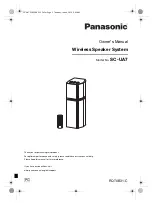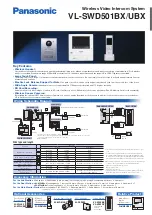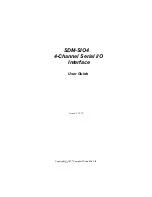
200 Series Owners Manual v.1
7-6-06
Page 7 of 9
Tips To Obtain the Best Results
1. Use only fresh alkaline batteries. Do not use “general purpose” (carbon-zinc)
batteries.
2. Position the receiver so that it has the fewest possible obstructions between it
and the normal location of the transmitter. Line-of-sight is best.
3. The transmitter and the receiver should be as close together as conveniently
possible, but not less than 6' (2 m).
4. Do not place the receiver antennas within 3' (1 m) of another receiver or
antenna.
5. The receiver antennas should be kept away from any metal.
6. A receiver cannot receive signals from two transmitters at the same time.
7. In the UniPak transmitter, the “MT” or “GT” input control not in use should be
set to minimum.
8. If the receiver output is set too low, the overall signal-to-noise ratio of the
system may be reduced. Conversely, if the volume control of the receiver is set
too high, it may over-drive the input of the mixer/amplifier, causing distortion.
Adjust the output level of the receiver so the highest sound pressure level going
into the microphone (or the loudest instrument playing level) causes no input
overload in the mixer, and yet permits the mixer level controls to operate in their
“normal” range (not set too high or too low). This provides the optimum signal-to-
noise for the entire system.
9. Turn the transmitter off when not in use. Remove the battery if the transmitter
is not to be used for a period of time.
10. Unplug the receiver from the AC outlet when the system is not in use.
System Operating Frequencies
Frequency Selection
Each transmitter/receiver system operates on a single factory aligned, crystal-
controlled frequency. Available frequencies are shown in the chart below.
Operating frequency is specified by a two character code, such as “T2,” in
addition to the actual frequency in MHz. The frequency of each transmitter
appears on a label on the outside of the unit. The frequency of each receiver
appears on a label on the rear panel of the unit and the frequency of each
system appears on the outer carton. For future reference, please record them in
the space provided below.
RF Interference
Please note that wireless frequencies are shared with other radio services.
According to Federal Communications Commission regulations, “Wireless
microphone operations are unprotected from interference from other licensed
operations within the band. If any interference is received by any Government or
non-Government operation, the wireless microphone must cease operation...”
If you need assistance with operation or frequency selection, please contact your
dealer or the A-T professional division.



























